From the earliest days, Americans and their presidents have been brewing. Ever brewed your own beer, cider, or ale?
Simple wine, beer, mead, ale, flavored liqueurs, cordials, shrubs, and brandies can be made using the fruits—and also the vegetables, herbs, and flowers—of your labors!
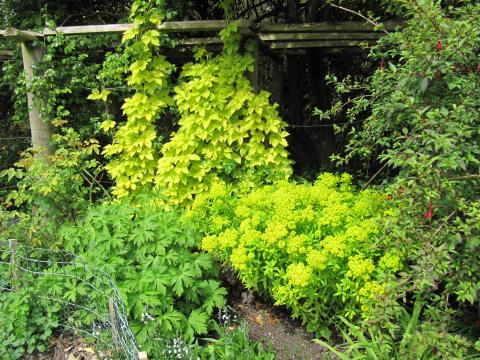
Home brewing has a long history; some anthropologists believe that beer is as old as civilization itself. They think that the change from a hunter-gatherer society to an agricultural one was due to the growing of grain used for brewing and not for the making of bread. Brewing was often a sacred ceremony and every culture has stories concerning the divine gift of fermentation and its ability to heal and nourish as well as to inebriate.In Elizabethan times, water was not fit to drink so beer, ale, cider, and wine were the drinks of the day.
For those who also enjoy gardening, it is fun to experiment with growing crops for brewing at home. And if you’re a home brewer but not a gardner, growing your own ingredients is a flavorful step-up. While hops (Humulus lupulus) are a very popular ingredient for the home-brewer, many other brewing crops can be grown at home, including grains, fruit, and flavorful herbs.
You don’t need a garden to succeed as a home brewer, but growing your own ingredients is a flavorful step up
Apples and Hard Cider
Our colonial ancestors turned most of the apples they grew into cider which was fermented by the barrelful to preserve it. Hard cider was the beverage of choice for men, women, and children, with most households consuming an average of 35 gallons per person per year.
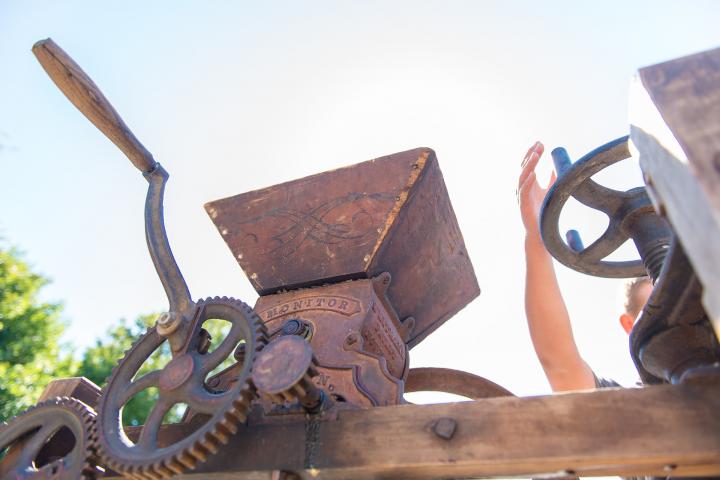
If you have a source of unpasteurized cider you can make your own hard cider. With an alcohol content of 5 to 7%, properly fermented cider will keep for 2 to 3 years.
Read more about starting an apple cider orchard.
Hops and Brewing Beer
A brew made with hops is technically a beer and not an ale.
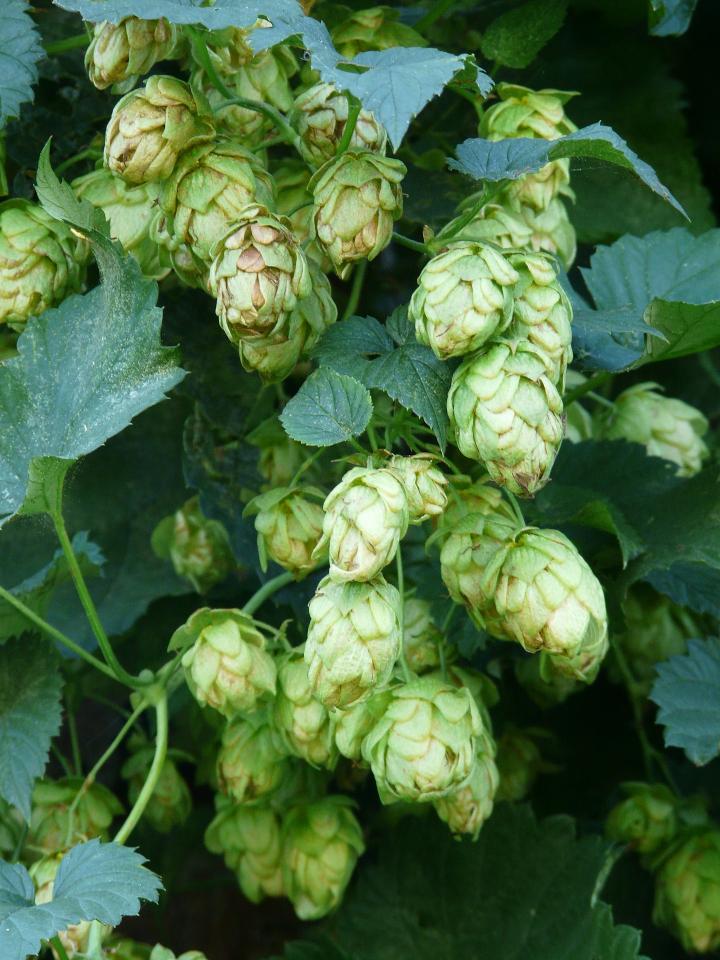
Hops (Humulus lupulus) is a perennial climbing vine with fragrant, cone-like flowers called strobiles. In the same family as marijuana, hops have a soporific effect and, in addition to their use in beer-making, the flowers have long been used in dream pillows to induce sleep.
Whether you wish to make beer or use hops’ medicinal benefits, you can grow them in a home garden! When growing hops, start small.
There are many varieties of hops. ‘Cascade’ and ‘Centennial” are the two most popular.
As with most crops, select a site with 6 to 8 hours of direct sun. Soil needs to be loose (well-aerated by turning over several times) and nutrient-rich (with compost or fertilizer). Hop vines can grow to over 25 feet and weigh over 20 pounds, so trellising is important, even if it’s wrapping the vines on heavy rope between long poles. Plant in the spring, well after frost.
Hop grow from rhizomes which are planted in a foot-high mound. Place the root side of the rhizome down. Cover the mound with some straw or light mulch to inhibit the weeds.
Learn how to grow your own hops in your garden.
Herbal Ale
For something unique, try brewing an herbal ale. Basil, caraway, borage, hyssop, coriander, winter savory, and yarrow are traditional home brewing herbs used long before hops became popular. Fermented with sugar, yeast, and water they made popular tonics and aids to digestion in olden days. They only need to age 10 days to 2 weeks before drinking.
Wine Making
Once you get the hang of home brewing, you may want to try your hand at wine making.
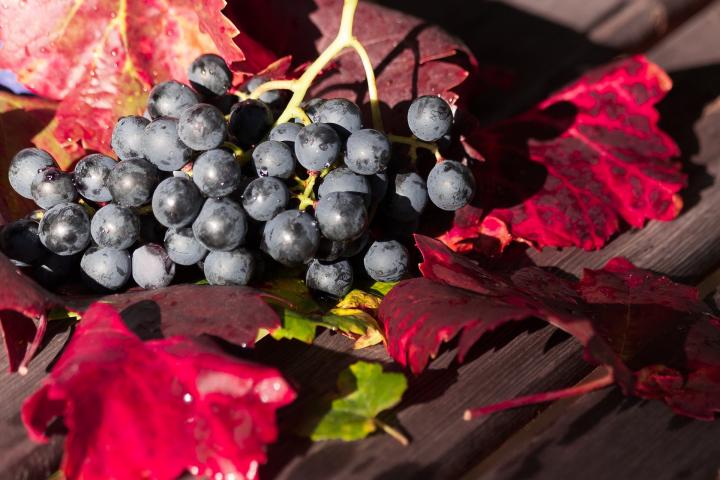
Grape wines are relatively easy to make but you can make wine from just about any fruit, vegetable, flower, or herb. Root vegetables including beets, parsnips, carrots, and potatoes make excellent wine.
We are all familiar with dandelion wine but other flowers such as pansies, goldenrod, calendula, bee balm, and rose petals can be used to flavor homemade wine. There are 4 basic stages in winemaking: primary fermentation, secondary fermentation. clearing, and aging. The neophyte vintner should read up on the process and, if possible, make a batch or two with an experienced wine maker before striking out on your own.
Learn how to grow grapes.
Making Mead
A brew made with honey instead of sugar is called a mead. Honey slows fermentation so meads take longer to age but the rest of the process is similar to wine making.
Shrubs mix fruit or vegetables with vinegar and sugar. Popular in the 18th and 19th centuries when water was often unsafe to drink, the vinegar acts as a preservative. They can be made from anything from rhubarb to pumpkin and need to be aged for only 1 month before imbibing.
Brandies and Liqueurs
Flavored brandies and cordials are easy to whip up. Start with an alcohol base such as an unflavored brandy or vodka. Any fruit, herb, spice, edible flower, or root can be used for flavor. Crush or chop the fruit or other flavoring and soak it in the alcohol for up to 3 months. Strain out the solids. Make a sugar syrup from 2 parts sugar and 1 part hot water, boiled together until the sugar dissolves. Cool and add to the flavored alcohol. The liqueur can be aged longer for the flavors to meld.
See our favorite edible flowers to grow.
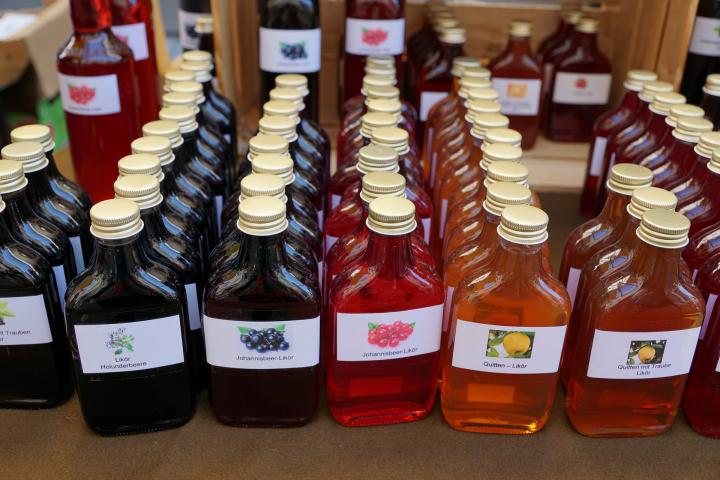
Fruit flavored liqueurs and brandies are very popular in Nordic countries with long cold winters.
Get into the spirit and turn your kitchen into a microbrewery. We hope this whets your interest!





